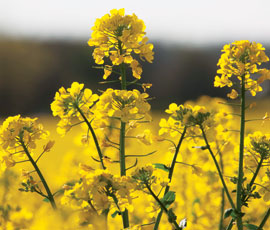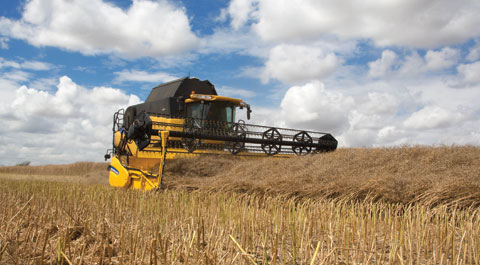Oilseed rape costs warrant closer attention

Until recently oilseed rape was little more than a break crop – something to slot in between the more important wheat crops. However, a rising trend in yields and higher sale prices thanks to a booming soya market have seen its gross margin overtake even first wheats on many farms.
This has prompted a reassessment of how the crop is grown, with more attention being paid to its management.
Most growers accept the need to focus on their costs of production as the route to profitability. Output prices are volatile and there is nothing the individual farmer can do about global markets. But the way the business goes about producing a crop is within a grower’s control and can be monitored and improved.
The graph illustrates the growing costs for an oilseed rape crop for the 2012 harvest. This is based on Andersons Loam Farm model – a notional 600ha business that is run on a real-world basis.
Note, these are merely the costs for this one farm; every producer will have a unique set of figures. This means that every business will have specific areas that it should focus on, and the easy wins will be in different places for each grower.
However, this can only be judged if the information is available, which means collecting it for your own business, and then comparing it with others.
Benchmarking is a phrase much beloved of management consultants, but it really can highlight areas for improvement. The figures are presented on both a per-hectare and per-tonne basis. This brings us to perhaps the most crucial point in achieving low costs of production for oilseed rape – having a high yield.
Low-input, low-output systems work in many areas of agriculture, but are seldom successful in combinable cropping systems.
The 3.7t/ha shown is for the current 2012 harvest. If a yield of 4t/ha could be achieved (as in 2011) then this immediately drops the cost of production to £257/t, adding more than £20 profit on every tonne sold.
As has been seen this season, yield is partly down to weather and disease pressure. But management also plays an important role. Some key points to consider include establishment, drilling date, nutrition and machinery.

A variety of establishment methods for rape are being successfully used and there is no right way to get the crop in. It is a question of finding what works for your land. All methods should aim to conserve soil moisture and ensure there is no compaction. The benefits of min-till or no-till systems come in operational cost savings.
Many small to medium-sized arable farmers may not have the equipment for this, but there are many contractors and large-scale farmers that offer contract drilling services with a one-pass machine with seeding equipment at a very competitive rate.
This can be an attractive alternative, particularly at a time of year when workloads are high – such as being busy combining wheat.
Because of workload pressures it may be tempting to get rape drilled as soon as possible to get a job out of the way. However, going too early could compromise the all-important yield later.
Remember, on heavier land, and especially this season with populations being at record levels because of the wet summer, slug control will be vital.
Although a good, thick, oilseed crop looks attractive in the field, very thick crops don’t always deliver yield, and wider row spacings or lower seed rates will also reduce seed costs.
Home-saving seed is another option, but it is vital this does not come at the expense of less vigorous plants.
Oilseed rape is a “hungry” crop. It can be seen from the graph that fertiliser is the biggest variable cost category. An early application of nitrogen in the autumn helps plant establishment and the cost should be recouped in the final yield.
Precision farming techniques and N sensors are becoming more widespread and have reduced fertiliser use and costs while maintaining yields in many situations. Again, it will not be necessary for every grower to invest in this technology – in many cases it will be more cost-effective to contract it in.
Aside from the standard fertiliser applications, oilseed rape crops need to have sufficient sulphur and other trace elements.
In terms of crop protection, every year will be different and there is a need to be flexible with spray programmes. Generally, even with the price of chemicals and the cost of applications, it does not pay to skimp at current output prices.
Perhaps, if a spray window is short, it may even make sense to prioritise the rape over wheat. Overall, as rotations have become tighter, and min-till more prevalent, the disease carryover is greater. Different spray programmes than those used in the past may be required.
On most farms it is in the power and machinery (depreciation, fuel, repairs) category where businesses can reduce their costs. Changes here are far less likely to affect yields, as it is more about how a farm is resourced and structured.

The mechanisms are well-rehearsed and apply to all crop production: appropriate levels of equipment investment, judicious use of contractors where appropriate, sharing equipment with neighbours, and so on.
The danger is that, with better profitability of oilseeds and other crops, the pressure to make business change is less. However, it is often better to restructure from a position of strength, and lower costs of production will allow even greater profits to be generated.
Share your thoughts on our dedicated costs of production forum
Read about cutting wheat production costs in the first article in this series

